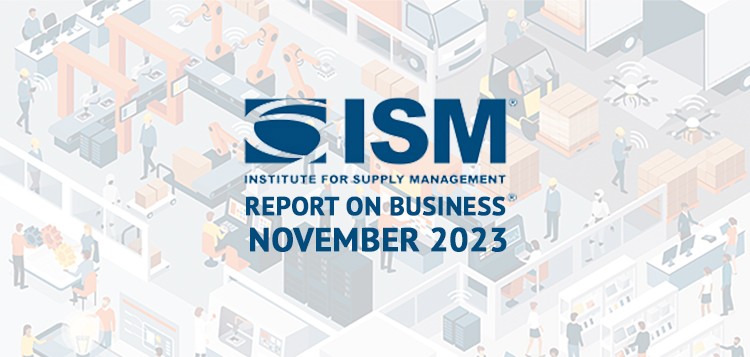PMI® Holds Steady in November 2020 Manufacturing ISM® Report on Business®

The November 2020 Manufacturing ISM® Report on Business® is out, bringing with it cautious optimism about the state of the U.S. economy’s recovery after initial COVID-19 shockwaves. ISM metrics initially rose just about as fast as they fell, which left many analysts concerned about a yo-yo effect headed into the end of the year. However, November’s figures show a stabilization of recovery efforts, setting the tone for stability headed into year-two of COVID-19 and numerous other uncertainties in 2021.
A breakdown of the recovery
November’s PMI fell ever so slightly from 59.3 to 57.5, and while it’s a decline, in many ways, it’s actually a positive one. The leveling-out of the PMI signals a recovery that’s tapering off at a healthy level, rather than bouncing up and down looking for a plateau. Delving deeper into the figures shines a light on the nature of this correction and how individual manufacturing metrics fared in November.
Unfortunately, the biggest pullback was from employment, which dropped 4.8 points. In a vacuum, this figure is most concerning to those fearing another economic pullback. That said, other metrics are less alarming and indicate stability that could balance economic worries. New orders fell 2.8 points, alongside production which was down 2.2 points. These metrics signal a relative tamp down on the surge experienced in August and September. Both remain firmly in expansion territory.
Despite other minor pullbacks from inventories, customers’ inventories, prices, and imports, the overall PMI continues a six-month trend of growth into the new year, bringing hopes of ongoing recovery with it.

A slow and steady recovery
In context with other critical economic data — including housing trends, employment data, and financial rates — manufacturing data signals a slow and steady recovery. The prime concern with a slow recovery is the overall stability of the economy, which still faces significant unemployment prospects and potential problems from surging COVID-19 cases. Manufacturing executives echo these fears:
“We are getting a lot more COVID-19 hits in our factories. We are also sending employees home for 14 days to quarantine if they were in close proximity to individuals that tested positive. We have had to shut down production lines due to lack of staffing. Cost of goods sold [COGS] is much higher than normal due to labor and production inefficiencies.” (Food, Beverage & Tobacco Products)
“The resurgence in COVID-19 cases is adding strain on our Tier-1 and Tier-2 suppliers. Multiple suppliers mentioned that finding new people is an issue with the COVID-19 situation. And there is a learning curve for new [supplier] hires, impacting production efficiency at their place.” (Transportation Equipment)

Fourth quarter stability is key
Despite some of the lurking concerns surrounding the manufacturing economy at the tail end of a tumultuous year, the fact remains: the PMI indicates stability. This is crucial headed into a year with new uncertainties like an administration change, coronavirus vaccine development, and lingering trade tensions across the globe. Manufacturing stability is directly linked to economic stability, which makes November’s plateau even more important. Should the ISM hold strong in the month to come, the likelihood of a slow, steady, continued economic recovery becomes even more certain for 2021.